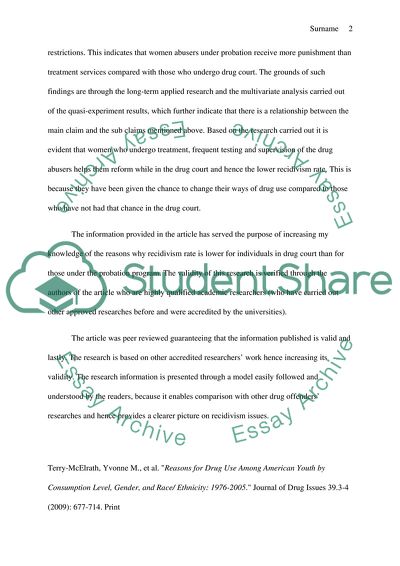Cite this document
(The Impact of Drug Court Involvement on Recidivism Annotated Bibliography Example | Topics and Well Written Essays - 1250 words, n.d.)
The Impact of Drug Court Involvement on Recidivism Annotated Bibliography Example | Topics and Well Written Essays - 1250 words. https://studentshare.org/sociology/1771532-write-3-annotated-bibliography-for-each-given-references
The Impact of Drug Court Involvement on Recidivism Annotated Bibliography Example | Topics and Well Written Essays - 1250 words. https://studentshare.org/sociology/1771532-write-3-annotated-bibliography-for-each-given-references
(The Impact of Drug Court Involvement on Recidivism Annotated Bibliography Example | Topics and Well Written Essays - 1250 Words)
The Impact of Drug Court Involvement on Recidivism Annotated Bibliography Example | Topics and Well Written Essays - 1250 Words. https://studentshare.org/sociology/1771532-write-3-annotated-bibliography-for-each-given-references.
The Impact of Drug Court Involvement on Recidivism Annotated Bibliography Example | Topics and Well Written Essays - 1250 Words. https://studentshare.org/sociology/1771532-write-3-annotated-bibliography-for-each-given-references.
“The Impact of Drug Court Involvement on Recidivism Annotated Bibliography Example | Topics and Well Written Essays - 1250 Words”. https://studentshare.org/sociology/1771532-write-3-annotated-bibliography-for-each-given-references.


